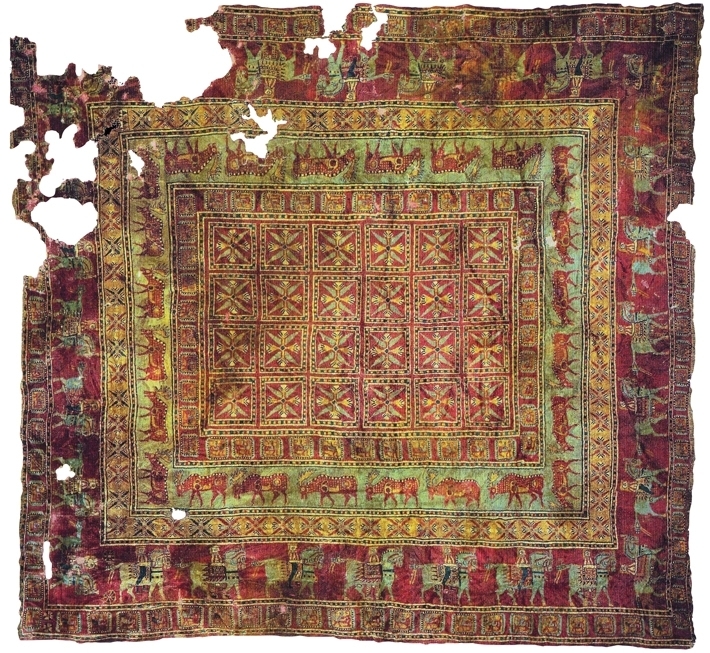The Pazyryk Carpet – The Oldest Carpet in the World!
With harsh winters, in the Altai region of Siberia lies the Pazyryk Valley, which contains ancient kurgans (tombs) of the Scythians who inhabited the area over two thousand years ago. Archaeological excavations have revealed historically essential items from the little-known ancient nomadic peoples of Pazyryk.
Among the finds were mummies, saddles, a funeral carriage, statues, and cannabis seeds. It was discovered that they had been preserved by ice since the 5th century BC. The mummies were so preserved that they still had flesh and hair.
One of the most notable finds was the Pazyryk Carpet. As far as is known, it is the oldest carpet discovered and is now in the Hermitage Museum in St. Petersburg. The museum describes the rug as follows: “Its decoration is rich and varied: the central field is occupied by 24 cross-shaped figures, each composed of four stylized lotus buttons. The central area is protected by a narrow border, followed by a wide border that contains 24 deers. The widest border contains representations of pack animals and men.”

What is not mentioned is the ambiguity of the carpet’s origin. The Pazyryk Valley was located between significant trade routes that spanned the ancient world, with China to the east and Central Asia to the southwest. One of the mummies was dressed in a silk tunic, probably made in India. Some of the figurines were made of gold, which is not from this region.
Thus, it can be concluded that the Pazyryk Carpet probably came from Central Asia, although experts have not agreed whether it is a Persian or Armenian carpet. Both nations have carpet-making traditions that span thousands of years, and the horses represented on it are almost identical to the riders found in the ruins of ancient Persepolis. The exact origin of the Pazyryk Carpet will remain unanswered, but its significance and beauty are eternal.

Figalli Oriental Rugs
We do not sell rugs. We bring rare works of art to your home in the form of rugs.
Our services
You are Protected
Copyright © 2023 Figalli Oriental Rugs, All rights reserved. Desenvolvido por Agência DLB – Agência de Marketing Digital em Porto Alegre
